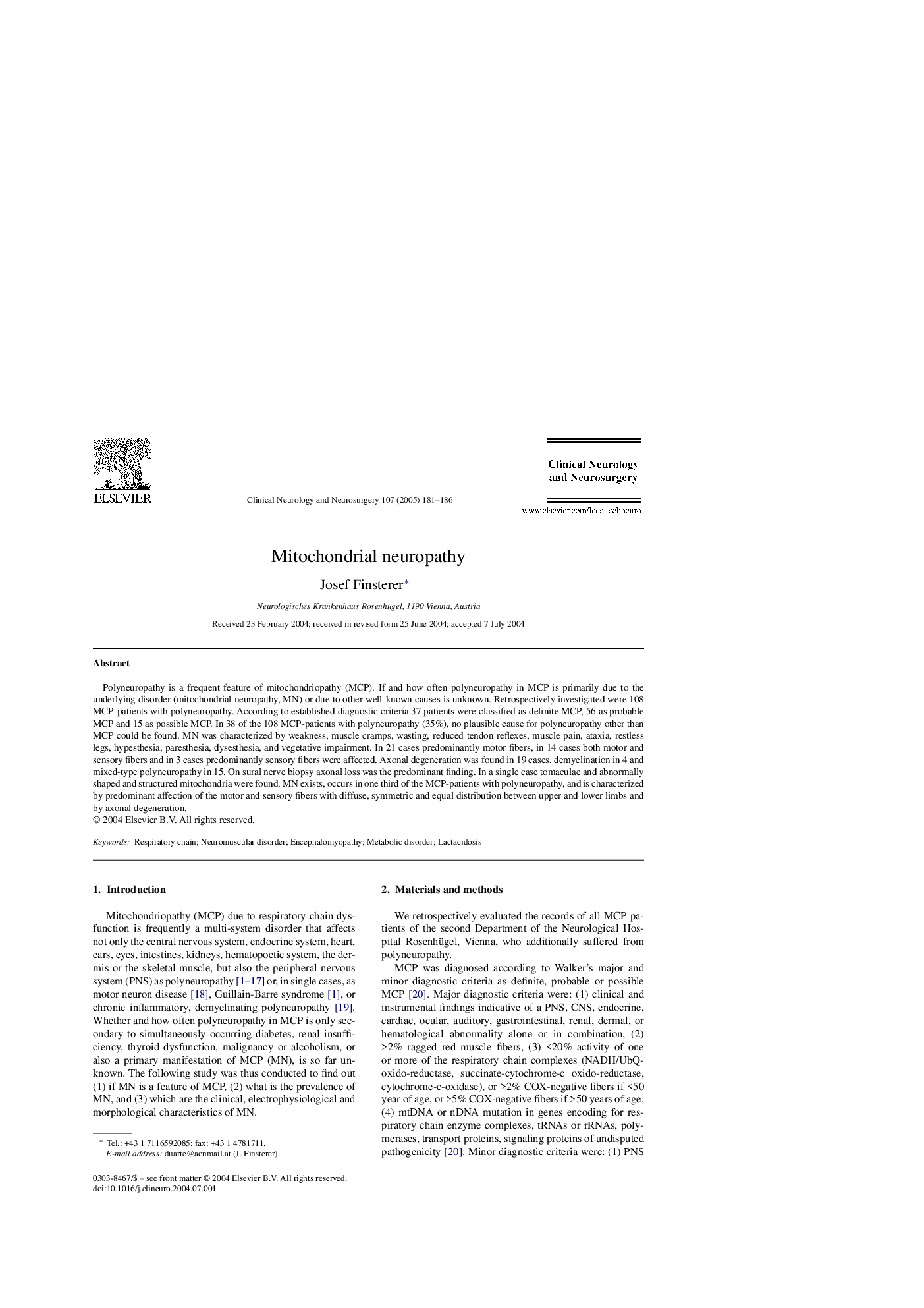| Article ID | Journal | Published Year | Pages | File Type |
|---|---|---|---|---|
| 9188039 | Clinical Neurology and Neurosurgery | 2005 | 6 Pages |
Abstract
Polyneuropathy is a frequent feature of mitochondriopathy (MCP). If and how often polyneuropathy in MCP is primarily due to the underlying disorder (mitochondrial neuropathy, MN) or due to other well-known causes is unknown. Retrospectively investigated were 108 MCP-patients with polyneuropathy. According to established diagnostic criteria 37 patients were classified as definite MCP, 56 as probable MCP and 15 as possible MCP. In 38 of the 108 MCP-patients with polyneuropathy (35%), no plausible cause for polyneuropathy other than MCP could be found. MN was characterized by weakness, muscle cramps, wasting, reduced tendon reflexes, muscle pain, ataxia, restless legs, hypesthesia, paresthesia, dysesthesia, and vegetative impairment. In 21 cases predominantly motor fibers, in 14 cases both motor and sensory fibers and in 3 cases predominantly sensory fibers were affected. Axonal degeneration was found in 19 cases, demyelination in 4 and mixed-type polyneuropathy in 15. On sural nerve biopsy axonal loss was the predominant finding. In a single case tomaculae and abnormally shaped and structured mitochondria were found. MN exists, occurs in one third of the MCP-patients with polyneuropathy, and is characterized by predominant affection of the motor and sensory fibers with diffuse, symmetric and equal distribution between upper and lower limbs and by axonal degeneration.
Related Topics
Life Sciences
Neuroscience
Neurology
Authors
Josef Finsterer,
